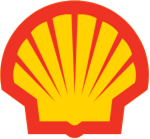Using an evolutional pathway from disciplinary towards transdisciplinary science and research, I explore exciting opportunities that can lead to transdisciplinary research as society demands for our science expertise to be increasingly involved in developing solutions for global issues of sustainability. I do this by presenting excellent examples by way Dr. Harry Vereecken has taken this...
For more than 35 years, Harry Vereecken developed vadose science research, aiming primarily to improve the understanding and prediction of water and contaminant transport processes, supporting sustainable soil and water management. This research is key in the current sustainable development agenda, where multiple objectives are directly related to good and healthy status of soil and water...
In past 3 decades, Harry Vereecken has addressed a number of topics related to soil hydrology covering a range of scales from pore to catchment. To honor his outstanding efforts, here we present a new data fusion scheme to merge soil moisture from various insitu and satellite platforms. In this work, we develop a novel multi-scale geostatistical algorithm which can combine massive remote...
Soil water content (aka soil moisture) influences many Earth surface processes, from surface runoff to ET to groundwater recharge. By combining pedotransfer functions (PTF’s) (e.g., Vereecken, 1995; Vereecken et al., 2010; van Looy et al. 2017), digital soil models, and high-resolution weather forecasts, we can estimate future soil water states (content and storage), and then use them to solve...
Across the Mediterranean region, there is a need to obtain an in-depth understanding of the impacts of climate seasonality (drought) and land-use (including wildfires) on ecosystem services related to the hydrological cycle (contaminant transport, soil erosion, etc.), especially in hilly-mountainous catchments that can be more sensitive to imbalances in the management of land and water...
Solute transport modeling at the hillslope scale warrants a detailed soil domain description. This is true even if we expect only matrix flow since variations in soil layering, like differences in the depth to impeding layer, could alter the location where preferential flow processes like funnel flow occur. The traditional pedological soil horizon-based representation may be inadequate to...
Recently progress in the international infiltration studies has been stimulated and summarized by Harry Vereecken and colleagues in several international efforts. These developments created opportunities to expand the knowledge on infiltration to large-scale projects by developing pedotransfer functions for infiltration equations. The complexity of relationships between parameters of...
In models and estimates of unsaturated hydraulic properties, the wet range between field saturation and the air-entry value is greatly oversimplified. Retention curves, for example, are often taken to be perfectly flat (unchanging water content) in this range, or are represented by an empirical formula that is unrelated to the active processes. Another example is diffusivity, which goes to...
Suction cups are widely used in agricultural and environmental research and monitoring under the hypothesis that the samples chemistry represents the soil pore water solute composition around the cup location. The objective of this study was to analyze the sampling procedures that lead to the most representative sample for soil aqueous phase composition when using a falling head suction cup....
The Richardson-Richards equation (RRE), a nonlinear partial differential equation (PDE), is commonly used to describe soil water dynamics. Analytical solutions of RRE are available only when simplifying assumptions are made. Therefore, numerical methods, such as the finite difference, finite element, and finite volume methods, are employed when solving practical problems. Here, we introduce an...
Data sets collected from field or laboratory experiments for the determination of unsaturated hydraulic parameters-water retention curves and unsaturated hydraulic conductivity-are often uncertain, imprecise, incomplete or vague because of a vague delineation of subsurface heterogeneities and preferential flow zones. The other source of uncertainty is inconsistency between the real physical...
Many different equations have been proposed to describe quantitatively the infiltration process. These equations range from simple empirical equations to more advanced deterministic model formulations of the infiltration process and semi-analytical solutions of Richards' equation. The unknown coefficients in these infiltration functions signify hydraulic properties and must be estimated from...
To improve estimates of long-term average groundwater recharge in data sparse arid regions, we combined a numerical multi-model approach with century-long time series of meteorological data and site-specific regolith hydraulic properties. The numerical model was set up in the vadose zone simulator HYDRUS-1D for a bare soil and a Mulga (Acacia aneura) savanna-type soil in central Australia....
The hydraulic and air conductivity and the water retention of porous media are non-linear functions of the water (or air) content or capillary pressure (Van Genuchten, 1980; Vereecken et al., 1989, 1990; Assouline and Or, 2013), which results in non-linear water and air, single- and two-phase flow equations that usually preclude analytical and necessitate numerical solutions. If assuming...
The recharge from the soil to the groundwater is a crucial variable to simulate time-variable groundwater levels and gradients at a catchment scale. Although essential for groundwater modelling, no direct measurement methods are available. One way to estimate this variable is to calculate it from time-series of atmospheric boundary conditions (precipitation, potential evaporation) for specific...
Soil database was traditionally used to characterize uni-modal soil water retention curve and hydraulic conductivity curve in the past decades. However, soil is often shown to have dual-modal property, being described by macropores/fracture pore system and matrix pore system, respectively, indicating structured soils/fractured rocks and microscopic soils. Here we employed widely-used...
Progress in the fields of vadose zone and groundwater hydrology is still hampered by the challenges associated with the characterization of the multi-scale heterogeneity of the subsurface environment. Hydrogeophysics attempts to address this challenge by providing methods that allow the non-invasive characterization of subsurface structures (e.g., layering, sedimentology) and their interaction...
We present the results of a data driven analysis of energy and water balances from one of the field observatories within the Danish Hydrological Observatory HOBE. From this field observatory long time series have been collected of precipitation (several different type of rain gauges), radiation (four component sensors), latent and sensible heat (flux tower measurements using eddy covariance),...
Ground-penetrating radar (GPR) has shown a great potential for high resolution and non-invasive mapping to estimate soil hydraulic parameters at the field scale. In traditional GPR methods, soil dielectric permittivity is retrieved by using ray-based travel time or reflection analyses, which is strongly correlated to soil moisture. These methods suffer, however, from two major shortcomings....
Simulation of water, solute, and energy transport in the vadose zone requires appropriate soil hydraulic properties models. The established models implicitly assume that water storage and water flow occur only in completely filled soil pores, but neglect the so called non-capillary water (i.e. water in films on grain surfaces, and in pore corners). These models are therefore suitable to model...
Perched aquifers(PA) are important sources of groundwater in arid/semiarid climates where surface water resources are irregular (see, e.g., Intermittent…, 2017). PAs as hydrostratigraphic units are commonly conceived as being created/maintained by vertical infiltration from a vadose zone above aquifer’s phreatic surface and vanished due to a) vertical percolation, which descends into a...
Evaporation of water from a partly saturated porous medium is an important process. Evaporation fluxes contribute to the water budget and play a role in the energy balance at the soil surface. It is therefore an important component in the hydrological cycle. Moreover, evaporation is also the driving process of soil salinization.
The focus of this presentation will be to analyse...
Aerobic biodegradation is an important mechanism of organic contaminant removal from soils. We simulate nonlinear multicomponent biodegradation and transport of contaminants in spatially autocorrelated heterogeneous unsaturated soils under transient infiltration conditions. These processes introduce spatio-temporally complex behaviour that affect contaminant travel times, the extent of...
Background: Soil water processes take place partly on small scales and are prone to distortion by invasive methods. Therefore, non-invasive imaging techniques are mandatory for their analysis and subsequent improved understanding. Contrary to XCT, which is most sensitive to the structure of the solid matrix, MRI is well suited to monitor the liquid phase due to its sensitivity to the substance...
Solute transport under single-phase flow conditions in porous micromodels was studied using high-resolution optical imaging. Experiments examined loading (injection of ink-water solution into a clear water-filled micromodel) and unloading (injection of clear water into an ink-water filled micromodel). Statistically homogeneous and fine-coarse porous micromodels patterns were used.
It is...
Water injection and production is key to many industrial applications including hydrocarbon recovery, geothermal energy exploitation and ground water resource management. To comply with water quality requirements and environmental regulations, water is thoroughly treated and filtered before injection into the subsurface. Even after such extensive treatment, sub-micron solid particles remain...
A major contaminant transport process in soils is hydrodynamic dispersion by affecting the spreading and arrival of surface-applied pollutants at underlying groundwater reservoirs. When a soil is unsaturated, hydrodynamic dispersion is very much affected by soil water saturation. Centimeter- and decimeter-scale column experiments were carried out to explore the effects of fluid saturation and...
Harry Vereecken’s career is built around the most important live-sustaining porous part of the Earth: the vadose zone, including soil. Understanding the processes in this medium and characterizing its properties is not only an intriguing scientific challenge, it is also vital for sustaining human societies. It is impossible to overrate the important functions of this porous medium and the...
The current understanding of the effects of soil management on carbon cycling and emissions of major greenhouse gases (e.g., H2O, CO2, CH4, N2O) is limited by the dearth of available sensing technologies that can make spatially distributed soil gas concentration measurements at the field and landscape-scales. It is important that these gas concentration data be furthermore be closely linked to...
Buoyancy-driven flow in porous media is bookended by two canonical scenarios: a vertically-descending plume and horizontally-propagating gravity current. Whereas the former is dominated by entrainment, the latter often includes significant dispersion. For example, when a gravity current propagates down-dip along a permeability jump (sloping or horizontal), the leading edge may fractionate into...
The widespread use of aqueous film forming foam (AFFF) in fire suppression over many decades has resulted in contamination of industrial and military sites with per- and polyfluoroalkyl substances (PFAS). Due to their long-term persistence, environmental toxicity and bioaccumulation, PFAS have become emerging contaminants of critical concern, subjected to rapidly evolving regulations....
In this work we investigate a tool for optimizing the amount of water necessary for an efficient irrigation. In particular, we propose an optimal control approach for suitably handling top boundary conditions in Richards' equation, in a 1D spatial domain. The minimization problem of the given objective functional aims at optimizing the root water uptake term while minimizing the amount of...
Macropore flow in near-surface soils can increase contamination risk of underlying water resources by agrochemicals. Macropore flow is commonly simulated using dual-permeability models (DPMs) involving separate equations for flow in the soil matrix and the macropores, which then are coupled using a lateral mass transfer equation. A large number of parameters and difficulty of measuring them...
Optimization of nitrogen (N) fertigation is a formidable challenge involving complex interactions between water and N uptake and their effects on crop production. Numerical models can be useful in studying the interaction of multiple variables like those found in mechanistic simulations of N fertigation strategies. The physical aspects can often be accurately represented in...
Accurate estimates of root zone soil moisture (RZSM) at relevant spatio-temporal scales are essential for many agricultural and hydrological applications. Applications of machine learning (ML) techniques to estimate root zone soil moisture are limited compared to commonly used process-based models based on flow and transport equations in the vadose zone. However, data-driven ML techniques...






